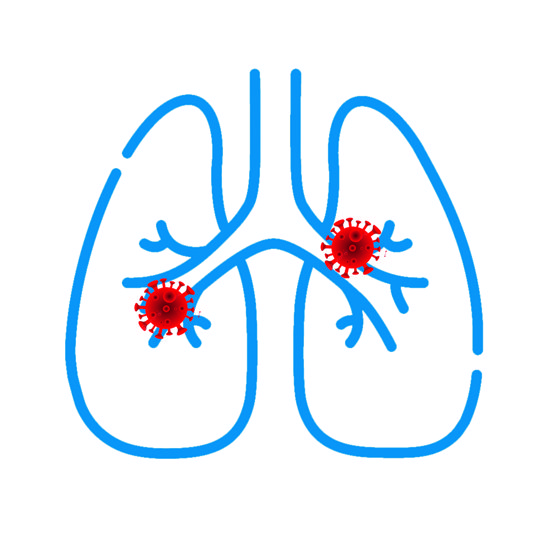Every breath counts, stop pneumonia in its track! However, of late there has been an alarming rise among youngsters in India reporting pneumonia without its ‘usual or aggravated’ signs or symptoms. They have the usual flu-like symptoms of congestion and fever.
Walking pneumonia is a milder form of pneumonia that at first sight wouldn’t seem very daunting. It may not even require immediate hospitalization like other severe forms of pneumonia, Individuals casually continue with their daily chores, work commitments and other leisure activities. However, all through this it is certain that they would experience some form of dullness, fatigue or simply feel unwell, wondering what is wrong. Simply put, walking pneumonia is a type of pneumonia that primarily refers to an infection of the lungs.
Walk-in Pneumonia
Walking pneumonia or atypical pneumonia could be understood as a mild infectious variant caused by bacteria, fungi or a group of viruses. However, it’s imperative to understand the nature of this type of ‘passive’ pneumonia. “Unlike classic pneumonia, walking pneumonia does not cause severe respiratory distress or high fever allowing individuals to feel they’re all fine and continue with their daily activities,” says Dr Deepanjali Sharma, a Consultant Pulmonologist. What could be a little alarming is the fact that in India, many of these ‘silent’ cases of walking pneumonia stay under the ‘limited’ line due to underreporting.
Dr Deepanjali adds, “In reality, studies suggest that this accounts for approximately 30% of community-acquired pneumonia cases in both urban and semi-urban populations.” These silent killers amplify their spread, especially during the monsoon and winter.
Causing Factors
It is believed that the primary cause of walking pneumonia is an infectious microorganism known as Mycoplasma pneumoniae, a type of bacteria that in scientific terms lacks a cell wall. These finer silent killers are transmitted through respiratory droplets when an infected person sneezes, coughs or even simply tries engaging in a conversation.
Dr Mrityunjay Sharma, MD (Respiratory Medicine) & Consultant Pulmonologist from Bilaspur, Chhattisgarh, confirms this, “It is true that Mycoplasma pneumonia is responsible for up to 50% of walking pneumonia cases, especially in young adults and children.” The potential causes could also be bacterial agents such as Chlamydophila pneumoniae and Legio-nella pneumophila with the latter one, causing a severe attack of pneumonia. Dr Mrityunjay adds, “Given the lack of a cell wall, this enables the bacteria to escape from the clutches of certain antibiotics, prolonging the infection.”
The Age Factor
The primary targets here by this usually ignored bacteria are children and young adults anywhere between five to twenty-five years of age. Primarily due to this age segment spending more time in closed environments or ‘close-contact’ environments such as classrooms, dormitories, sporting zones or courts where these respiratory carrier droplets are allowed to spread more comfortably and easily. Dr Mrityunjay opines that older adults too face similar risks. He says, “Older individuals are at a risk due to weakened immunity and a higher likelihood of coexisting conditions like diabetes, heart diseases or COPD.”
Prevention & Cure
The most effective, yet ignored practices start at home. Dr Deepanjali suggests, “Proper handwashing with soap would help reduce transmission risk significantly.” While there is yet no definite vaccine that exists for Mycoplasma pneumoniae, other aids that could prove beneficial here are flu and pneumococcal vaccines that are usually known to reduce the burden of co-infections. It is important to maintain a safe distance from individuals who show evident symptoms like persistent coughing or sneezing.
Caution Over Panic
While walking pneumonia is generally considered to be mild, one shouldn’t at any cost ignore the fact that this can soon escalate into a life-threatening condition. Dr Mrityunjay says, “Studies estimate that 2-3% of walking pneumonia cases develop into severe complications with the risk being highest among those with underlying chronic conditions.”
However, timely diagnosis and apt treatment would certainly reduce these risks. Delayed care or treatment can even turn a mild infection into a more serious and irreversible threat!
“Unlike classic pneumonia, walking pneumonia does not cause severe respiratory distress or high fever allowing individuals to feel they’re all fine and continue with their daily activities.” — Dr. Deepanjali Sharma, Consultant Pulmonologist
Watch Out
Potential Triggers Of Walking Pneumonia
Crowded environments: Schools, daycare centres or other crowded spaces
Pollutants and irritants: Air pollution and exposure to tobacco aka passive smoking
Underlying conditions: Asthma or Chronic Obstructive Pulmonary Disease (COPD) making it easier for pathogens to infect.
Other Triggers: Stress, poor sleep or a weakened immune system

